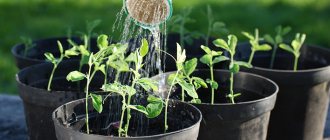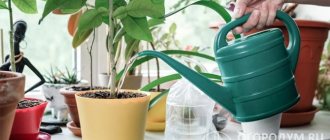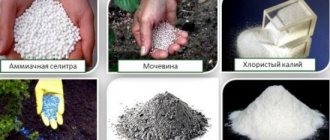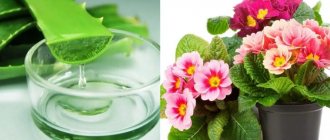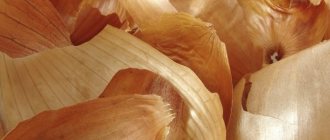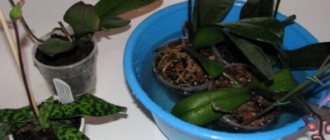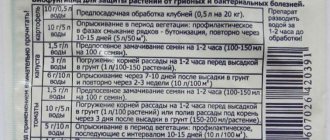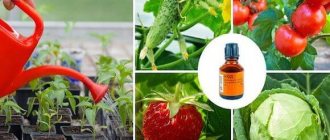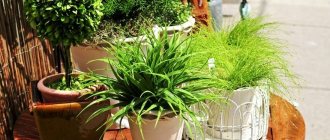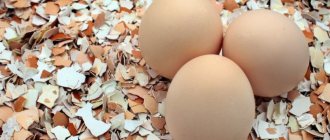Cherry
Urea is applied in early spring under the bush in an amount of 50-70 grams. Then, during the growing season, 2 additional feedings are given. The first - at the moment of flowering of the cherry, the second - after 2 weeks. To do this, prepare a solution of mineral fertilizers: combine 15 g of urea, the same amount of potassium chloride and 25 g of superphosphate in 10 liters of water.
At the end of flowering, it is also useful to give the cherries foliar feeding with a 0.5% urea solution.
Common mistakes
Although urea has been used in agriculture for a long time, some mistakes are still common:
- Scattering dry granules over the soil surface. As a result, ammonia evaporates from the granules, and fertilizing turns out to be useless.
- Mixing urea with lime fertilizers, as well as wood ash. This leads to plant poisoning.
- Storing the package with the drug in an unheated place (outside or in a room such as a garage). As a result, after winter the granules stick together due to increased humidity.
- Using urea simultaneously with water for irrigation. This leads to a chemical burn of the root system of the seedlings. The urea solution is applied only to moist soil.
Sources
- https://udobryashkin.ru/promyshlennye/mochevina
- https://VseUdobreniya.com/promyshlennye/mochevina
- https://stroy-podskazka.ru/udobreniya/karbamid/
- https://FertileLand.ru/mineralnye-udobreniya/karbamid/
- https://uhodvdomashnihusloviah.ru/primenenie-udobreniya-karbamid
- https://OgorodGid.ru/udobreniya/udobrenie-mochevina-karbamid-primenenie
- https://moyasotka.com/zashhita-rastenij-i-udobreniya/mochevina-karbamid-udobrenie-primenenie-na-ogorode-i-sadu.html
- https://fermersadovod.ru/sad-i-ogorod/udobreniya/mochevina-primenenie-na-ogorode/
9 255
Useful tips and tricks
- It is worth feeding plants with urea, protecting the respiratory tract with a special mask or gauze bandage, and your hands with gloves.
- Urea can be used not only for feeding, but also for spraying garden plants against pests. To do this, you need to dilute 500 g of urea in 10 liters of water and treat the plants with a garden sprayer.
- It is better to fertilize and spray flowers in the morning or evening, since at this time the temperature is most suitable.
Urea is one of the most popular nitrogen fertilizers, which effectively and safely helps eliminate nitrogen deficiency in flowers. In addition, the price of this supplement fully justifies its quality.
Natural starter cultures for watering
Hop starter
Take 1 cup of dry or fresh hop cones and place them in boiling water. Cook for one hour. When the broth has cooled, you need to strain it, and then add 4 tablespoons of flour and 2 tbsp. spoons of sugar. Leave the solution in a warm place for two days.
After 2 days, you need to add two raw, grated potatoes. After stirring, place again in a warm place for a day. Only now can the starter be used.
Wheat sourdough
Soak one glass of wheat. Leave the mixture for a day so that sprouts appear from the grains. The sprouts must be crushed into a paste. After this, combine with two tablespoons of flour and two tablespoons of sugar. Place the porridge on the fire and simmer over low heat for no more than 20 minutes. Leave the “potion” for the plants to reach - in a warm place for a day.
Strawberry
If the weather is cool during budding, you can stimulate plant growth with a 0.3% urea solution, and a day later - with a 0.5% solution of potassium monophosphate.
Nitrogen fertilizers will be useful to almost all plants. They especially need them in the spring, at the beginning of growth. Spraying is best done in cool weather or in the second half of the day.
Eradication treatment of the garden in the fall. Spring therapeutic and eradicating treatment of the garden.
Hello, dear friends. I welcome you to the “Dacha Stories” channel. Our topic today is especially relevant on the eve of the start of the summer season. We will talk about treating the garden in early spring against diseases and pests.
Gardeners and gardeners should not forget that in the spring, along with the awakening of fruit trees and berry bushes, diseases and pests of our gardens awaken.
Therefore, in the spring, you must not miss the moment when it is necessary to eradicate the garden. It is not difficult to understand that this moment for processing has arrived. Agronomists call this period of tree awakening the “green cone.”
It is characterized by the fact that the bud has already burst, twisted leaflets are visible, which, however, have not yet begun to bloom. If the temperature is stable above +10 degrees, the sun is shining, there is enough moisture in the soil, the plant begins to intensively emerge from dormancy, it is possible to skip this period.
Eradication treatment can still be carried out, but following slightly different rules. You can do it a little earlier if you come to the dacha on the weekend and you have a suspicion that in a week the plant will be covered with leaves.
Most often, summer residents (including me) carry out eradication treatment using classic fungicides such as copper and iron sulfate. It’s very simple to prepare them, the main thing is to remember some features.
I'll tell you more about them. Let's start with copper sulfate.
First substance. Dissolve three hundred grams of copper sulfate in one and a half liters of hot water.
In a ten-liter sprayer, install a filter just in case, first pour two liters of water, then pour out our diluted copper sulfate.
The second substance we take is urea. 1 kilogram per ten liters of solution. Dissolve this kilogram in two liters of water and pour it into the sprayer. In eradication treatment, urea plays the role (in addition to feeding) of killers of pathogenic fungi, moss, and all kinds of pests. In addition, urea has a proven effect of delaying the flowering of trees and shrubs. This allows you to reduce the risk for the plant to fall into the period of recurrent frosts during flowering.
The third substance is an adhesive. You can take the usual, cheapest one, but be sure to use liquid soap. You need 200 milliliters per ten liters.
The fourth substance is 50 milliliters of 10% ammonia, per 10 liters. In this case, ammonia enhances the effects of copper sulfate. If you don't have ammonia, you don't have to add it. Sometimes I even simply forget about it, although I always have ammonia.
Another substance that makes sense to add, or rather I add, is 50 milliliters of a drug such as “Avgust Humate + 7 Iodine” diluted in a half-liter jar. In general, according to the instructions, 10 gamma of this drug should be diluted in 50-100 liters of water, but here such a concentration is acceptable. The drug is very cheap and I like it.
Add water to 10 liters and shake thoroughly.
A solution based on iron sulfate.
The preparation of a solution based on iron sulfate is somewhat different from a solution with copper.
First. We dilute half a kilogram of iron sulfate in a liter of warm water.
Second. Immediately, without waiting for the oxidation from 2-valent iron to 3-valent iron, since iron sulfate oxidizes very quickly in air, pour 40 grams of citric acid into the iron sulfate solution and mix thoroughly. The purpose of mixing iron sulfate with citric acid is precisely to complex it in its divalent form, the whole point is that trivalent iron loses its fungicidal properties almost completely.
This quantity is the same for ten liters of solution.
The remaining components, urea, soap and “Avgust Humate + 7 Iodine” remain and are diluted in the same way; ammonia is not used in the second solution.
According to personal feelings, a solution based on copper sulfate is stronger, but I could be wrong. However, copper sulfate is more expensive than iron sulfate, but you need to buy lemon juice for the second solution, and that also costs money. So the price of the solution is approximately the same.
How to properly feed flowers with urea
For foliar feeding of home flowers with urea, it is necessary to dilute it in water in a ratio of 5-8 grams of urea per liter of water. If you convert the dosage into spoons, you get half a teaspoon per liter of water.
For root feeding, you can use both an aqueous solution of urea and dry granules. The properties are the same for different forms of urea, the only difference is that it is better to fertilize flowers with solutions in dry weather, and with granules in wet weather, since the soil is sufficiently saturated with water and the granules will easily dissolve.
An aqueous solution of urea is used for root feeding of flowers.
If you need to fertilize an indoor flower with urea, then insert three granules into the moist soil along the edges of the pot and water as usual. Within a few days you will notice the result of fertilizing - the quality of the shoots will improve.
How to dilute urea to feed home flowers
One teaspoon of granular or powdered urea is diluted in one liter of water at room temperature and stirred until dissolved, after which the plants are watered with the resulting solution according to the instructions for use for flowers:
- Flowering plants are sprayed on the 14th day after the buds appear with the resulting solution. Repeated treatments should be carried out every two weeks.
- To emerge from hibernation, you should fertilize home flowers in early spring once in a ratio of 2 g per 1 liter of water.
- For root feeding of indoor flowers, dilute 0.5 teaspoon of urea in 1 liter of water. Fertilizing should be done once at the beginning of the growing season.
Combination with other fertilizers
The compatibility of urea with other fertilizers can be divided into compatible and incompatible.
Urea can be combined with other fertilizers
The first group includes:
- phosphate rock;
- superphosphate;
- ammonium sulfate;
- sodium and potassium nitrate;
- manure;
- potassium chloride;
- potassium sulfate;
- ammonium nitrate.
Incompatible fertilizers include all alkaline fertilizers, since by entering into a chemical reaction with each other, each fertilizer loses its beneficial properties:
- ash;
- lime fertilizers;
- calcium nitrate.
Signs of nitrogen starvation in plants
Whether or not plants have a nitrogen deficiency can be recognized by their falling off, slower growth and loss of brightness of color. Another sign is early flowering and poor harvest. Similar symptoms may occur due to a lack of water and some other nutrients. Characteristic features of nitrogen deficiency: there will be no wilting, but if there is little water and fertilizer, then it will occur during the day. The veins of older leaves will be touched first, while the natural aging process begins at the plate. If there is a lack of iron, it will begin with young leaves.
An acute shortage of urea will provoke unnaturally rapid ripening with low yields and loss of foliage. This problem is observed on podzolic soils, red and gray soils, as well as sandstones, eroded soils and lands with high acidity or alkalinity.
Rabbit manure
Rabbit manure is the most valuable type of manure produced by livestock. Farmers jokingly call it “rabbit gold.” The consistency of this type of manure is much drier than cow, chicken and horse manure, so it is more convenient to transport. Another benefit of rabbit manure is that it does not contain weed seeds, as rabbits only eat plant stems and leaves.
Rabbit manure contains magnesium, nitrogen, potassium, water and organic matter, which stimulates plant growth and gives them vitality. Of the harmful microorganisms in rabbit manure, only coccidia can be found, which cause harm to rabbits, so manure cannot be stored near animal cages, and cages must be cleaned regularly.
However, rabbit manure cannot be applied fresh to the roots of plants, since it burns their root system, oversaturating the soil with nitrogen and releasing methane.
Rabbit manure is used in the same way as cattle manure: it is applied to the soil in advance for digging, composted and used in rotted form. For example, they make liquid fertilizer from it: put 1 kg of rotted rabbit droppings in a bucket of water and leave for 12 hours with regular stirring. This infusion is used to water holes or furrows before planting vegetables, spending from 1 to 2 liters per m².
However, there is one way to use rabbit manure that is not possible for the excrement of other animals: rabbit pellets are dried in the sun and pounded in a mortar, and then this powder is used as fertilizer not only for the vegetable garden or garden, but also for feeding indoor plants.
Rabbit manure is composted using the same principle as other types of excrement. It is contained in boxes or piles, layered with other types of organic matter: sawdust, straw, weeds, peelings of vegetables and fruits. To improve the composition of rabbit humus, you can run worms into the lower part of the compost, and after a month and a half, the worms are removed and the pile is mixed.
Moisten the compost heap with water or a solution of mineral additives. The result is an excellent humus fertilizer for crops such as pumpkin, potatoes, cucumbers, tomatoes, as well as gooseberries, currants and barberries.
You can buy rabbit manure on farms and in garden pavilions. Rabbit manure sold in specialized stores is better in that it is disinfected, dried and ready for use, since it has already passed the stage of overheating. Farmers rate the quality of rabbit manure very highly, claiming that after applying it to the soil for two years, the soil on the site becomes airy and soft, but at the same time does not sprout weeds, as after using horse manure or mullein.
